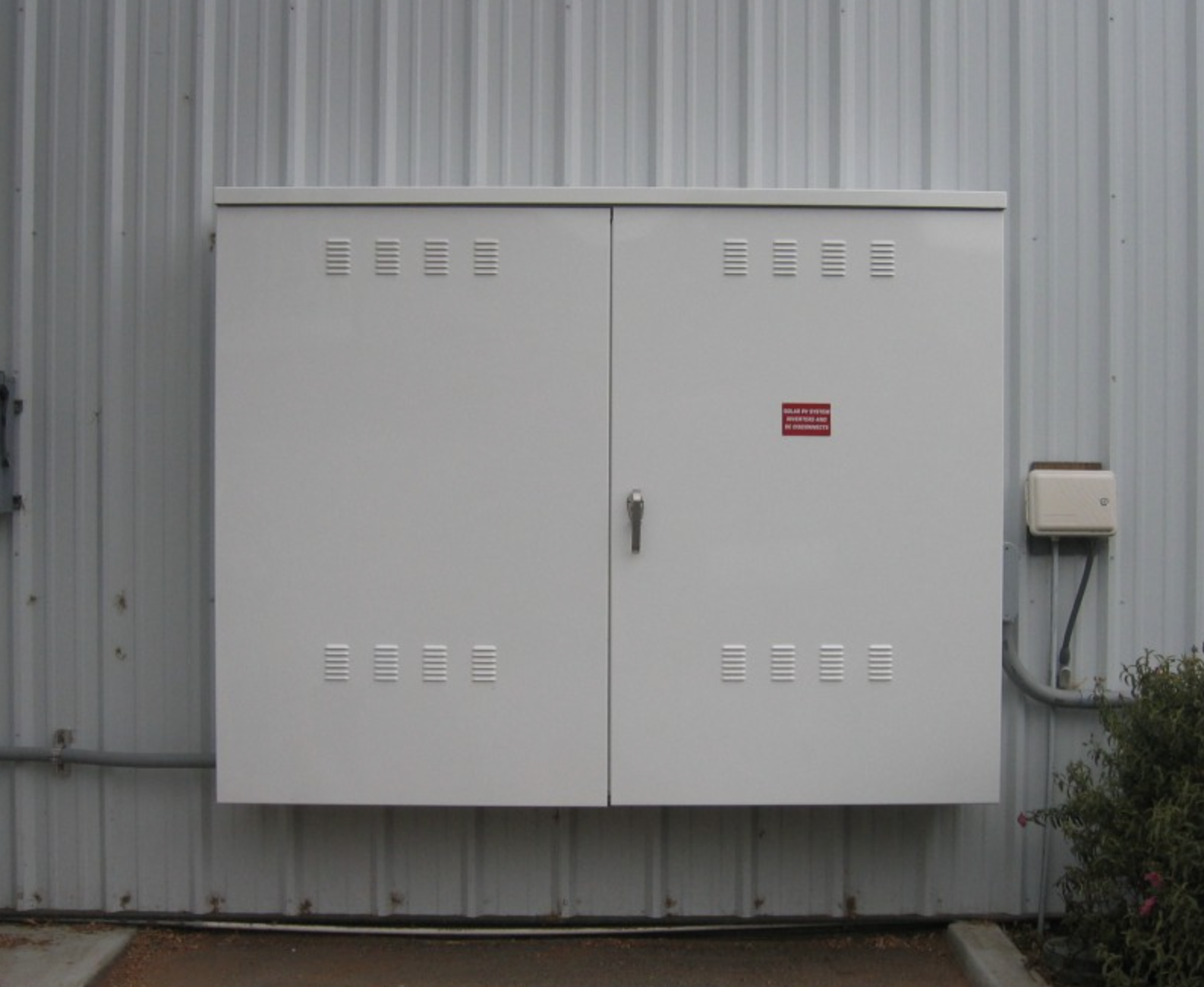What is a Feeder Pillar (Power Box)?
magine a feeder pillar as the unsung hero in your neighborhood, ensuring electricity flows safely to every home. This crucial cabinet, often seen but rarely noticed, orchestrates the distribution of power, safeguarding circuits and simplifying control. It’s like the brain of your area’s electrical system, quietly keeping the lights on and appliances running smoothly.
Similar to a junction box, a feeder pillar box protects people from coming into contact with live wires, as well as protecting wires from dust and dampness.
Electrical feeder pillars are mounted on the street and are used to control the electrical supply to houses in a neighborhood. A feeder pillar is another word for a cutout enclosure or other electrical enclosure that is used as part of an underground electrical distribution system.
You may have inadvertently seen electrical feeder pillars driving around without taking much notice. They are typically found near:
Airports
Highways
Rail
Retail & Leisure
Substations
Street Lighting
Temporary Generator Power Hook Ups
Feeder Pillar Components
A feeder pillar looks like a big steel wardrobe. The outer body of a feeder pillar is typically around 2 millimeters thick.

Electrical feeder pillars are typically manufactured in aluminum sheets, or electo-galvanized/galvanized steel sheets. Double-wall and single wall constructions are available in a 4/6/8 distribution.
These include ammeters, selector switches, whole house surge protectors, service fuses, and instrument panels with voltmeters. The design, structures, and build are suitable for all kinds of lighting applications. The entire feeder pillar unit is mounted on top of a steel base.
Traditional Feeder Pillars
The traditional feeder pillar design involved an open frame, supporting busbars, a pole-operated disconnector (isolator) for the incoming circuit and outgoing fuseways which are mounted in insulated carriers.
The traditional feeder pillar had its quirks – from the risk of accidentally touching live wires to the cumbersome process of changing circuits with fuse handles. Not to mention, its tightly packed wires made any electrical work a challenging puzzle. These issues nudged the industry towards safer, more user-friendly designs.
As safety standards have increased over the years, these flaws in the traditional feeder pillar design have caused them to be phased out in favor of more modern types of feeder pillars. Although these modern types of feeder pillars are much safer than traditional designs, good safety practices should still be followed, including wearing good electrical gloves and anti fog safety glasses.
Types of Feeder Pillars
Feeder pillar panels can come as custom manufactured or standard empty enclosures. Here are the most common electrical feeder pillars that are available:
Rail Feeder Pillars
Rail feeder pillars are non-conductive and are available in an outdoor location or station installments. It eliminates the risk of touch voltages in electrified rail areas. These pillars can have PADS approved Network Rail equipment such as:
Switchgear
DC Immune RCD
DNO Service Hands
Isolation Transformers
CT Chamber & Member
Cut-Outs & Isolators
LV Feeder Pillars
Low voltage feeder pillars (LV feeder pillars) are feeder pillar panels that operate at a “Low Voltage” (LV), where “Low Voltage” is defined by the International Electrotechnical Commission (IEC) as a supply system voltage in the range 50 to 1000 V AC or 120 to 1500 V DC (if you’re unsure of your operating voltage, you can easily check this with a good multimeter).
Electrical distribution pillars give LV power connections for single units or complex developments in the commercial and residential sectors.
LV feeder pillars are used for utility substation, M&E building services, hazardous area industries, and renewable energy. Highway pillars are used for CCTV, traffic signals, street lighting power, motorway communications, and control and distribution.
Feeder Pillar Design Considerations
Installation
Feeder pillars are installed by professional electricians who are experienced, trained and qualified. And they must follow the local municipality’s requirements in health and safety in lighting conditions in any location.
Thus, only approved pillars from manufacturers should be installed to ensure full compliance with local authorities on electrical safety and lighting. There can be a label of approval by the right authorities on each pillar that can be installed on any premise, whether its outside or inside the property.
The best positions should be in areas that avoid serious dangers to customers around the area. The space should be clutter-free, so the electricians can work on repair safely and easily without causing potential risk to consumers. The feeder pillar should be well lit, although if that’s not possible electricians can always wear headlamps while working.
Functionality
At first glance, a feeder pillar might look like just a metal box, but it’s a fortress of safety for your property’s electrical system. It not only safeguards circuits but also plays a pivotal role when upgrades are necessary, ensuring everything runs smoothly without a hitch. Remember, the protection it offers is only as good as the components you use with it, like high-quality coaxial cables which are an investment in safety and performance.
An experienced electrician will recommend the right feeder box to hold all of the circuitry for better lighting efficiency. The right feeder helps manage a huge power supply that safely goes through the wires with the fuses labeled for easy identification. If you need help with this, a good electrical circuit tracer can assist you in quickly identify breakers and fuses and tracing wires behind walls.
Simple Minded Operation
The genius of feeder pillars lies in their straightforward design, allowing electricians to quickly connect them for maintenance or in emergencies. With terminals designed to snap securely in place, they ensure a reliable connection every time. This design simplifies the power supply to both lighting and internal circuits, making it a breeze for professionals to manage, no matter where they’re installed.
Design and Robustness
The ideal feeder pillar combines form with function, sporting a design that’s not only aesthetically pleasing but also prioritizes safety with large, well-insulated fittings. Its sturdy construction ensures durability against the elements, ready to stand up to whatever Mother Nature throws its way. And for those looking to measure its resilience, a top-notch insulation resistance tester will do the trick, confirming its robustness.
Statement: Respect the original, good articles worth sharing, if there is infringement please contact delete.
Blake is an electrical engineering leader with 20+ years of expertise in imaging technology innovation. Former CTO of a global scientific camera manufacturer, he now drives strategic R&D and CCD-to-CMOS transitions at Jingtu Optoelectronics. His career combines technical excellence in precision instrumentation with cross-disciplinary team leadership across global markets.













